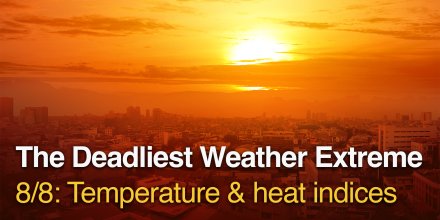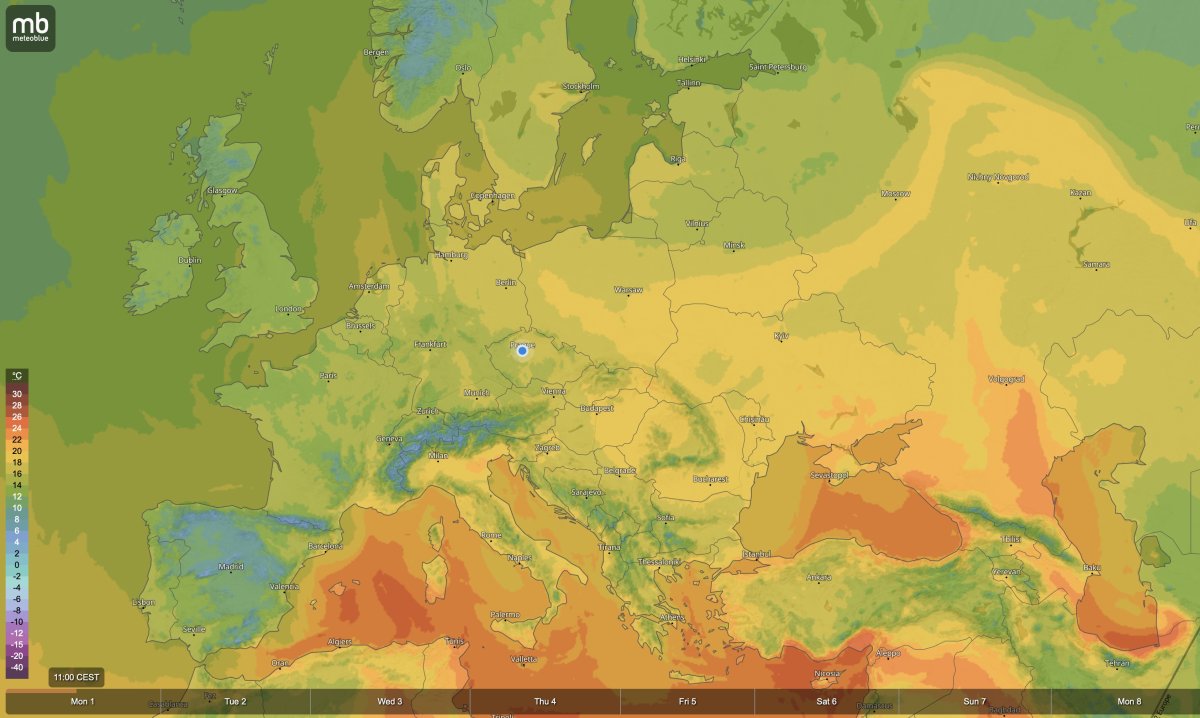This is a series of articles examining heatwaves from every angle, exploring their causes, consequences, and the science behind them. It includes eight parts:
- Introduction
- Heatwave patterns
- Health impacts
- Impacts on urban areas
- Extreme heat in 2024
- Are heatwaves linked to climate change?
- Adapting to more frequent periods of extreme heat
- Temperature, apparent temperature, and heat indices
To assess the risks that thermal stress poses to human health, several derived indicators are used in practice alongside air temperature. These aim to express either the apparent temperature or the level of thermal strain on the body. The most commonly used indices include the Heat Index, Wet Bulb Temperature, Wet Bulb Globe Temperature, and the Universal Thermal Climate Index (UTCI).
Heat Index
The Heat Index (HI) expresses how the human body perceives heat based on the combination of air temperature and relative humidity. If the temperature does not exceed 30 °C and the relative humidity remains below 40%, the difference from the actual temperature is usually minimal. However, as both temperature and humidity begin to rise, the heat index value increases, which in turn raises the apparent temperature. For example, at 35 °C with 75% relative humidity, the perceived temperature can rise by as much as 20 °C, resulting in an oppressive, muggy sensation.
Wet Bulb Temperature
Wet Bulb Temperature (WBT) represents the lowest temperature to which air can be cooled through the evaporation of water. It is measured using a standard thermometer wrapped in a wet cloth and exposed to moving air. The resulting value depends not only on air temperature but also on humidity and wind. The higher the humidity, the less effective the evaporation of sweat from the surface of the human body, and the higher the WBT. If the WBT exceeds 35 °C, the human body can no longer cool itself effectively, even in the shade, which can lead to thermoregulatory failure and death within a few hours. This threshold is therefore considered the physical limit of human survivability.
Wet-bulb potential temperature map — interactive view available on the meteoblue Weather Maps
Wet Bulb Globe Temperature
The Wet Bulb Globe Temperature (WBGT) index goes a step further by also accounting for solar radiation (including sun angle and cloud cover). It is an effective and practical indicator of heat stress, particularly for active population groups such as outdoor workers or athletes. WBGT is used by many organizations when planning educational, athletic, and occupational outdoor activities. For example, the Japan Meteorological Agency (JMA) used WBGT as the primary indicator for assessing heat stress during the Tokyo 2020 Olympics (held in 2021).
Universal Thermal Climate Index (UTCI)
The Universal Thermal Climate Index (UTCI) is a widely used indicator of heat stress on the human body. It reflects how people perceive outdoor thermal conditions, based on a combination of air temperature, humidity, wind speed, and both shortwave and longwave radiation.
Thanks to its broad applicability across seasons, climates, and spatial and temporal scales, UTCI is frequently used in climate mapping products by the European meteorological service Copernicus.
It provides an apparent temperature in degrees Celsius, describing the body's physical and physiological response to current weather.
UTCI heat stress categories: 32–38 °C = strong heat stress 38–46 °C = very strong heat stress above 46 °C = extreme heat stress
Explore how our tools help you prepare for heatwaves: Urban Heat Maps offer hyper‑local temperature insights tailored to city planning and public health,
climate+ provides long-term modelled and observed climate data for strategic adaptation, and point+ delivers precise, customisable weather forecasts for any location.
This article is based in part on original work provided by Jaroslava Sochorova (Windy.com), which has been adapted and edited by meteoblue.



